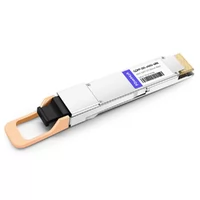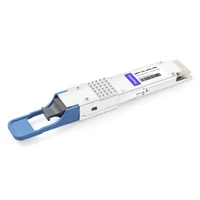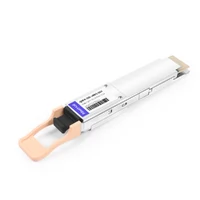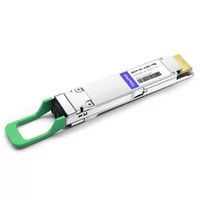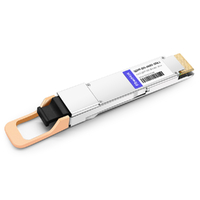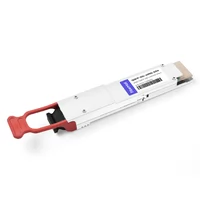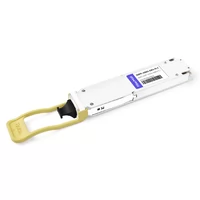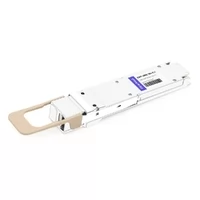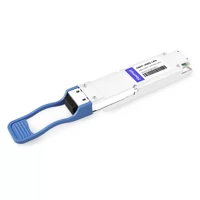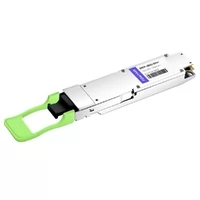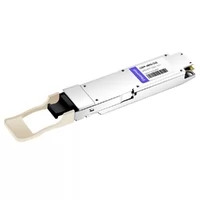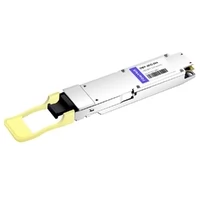In the present background of developing networking technology, it is clear that increasing requirements for data transmission are constant and considerable. This paper covers the persuasive aspects of the 400g transceivers with particular reference to the Quad Small Form Factor Pluggable Double Density (QSFP-DD) and other optoelectronics. Through the analysis of the new achievements in these modern off-the-shelf materials, we try to clarify the structure of such units, their operating characteristics, and how they can be employed within a specific system. This article will also prove useful to IT professionals, network engineers, or any IT technology enthusiast who wants to get to the bottom of the 400g transceiver concepts and, in such a way, make effective choices in a fast-moving and complex industry.
Table of Contents
ToggleWhat is a 400g Transceiver?
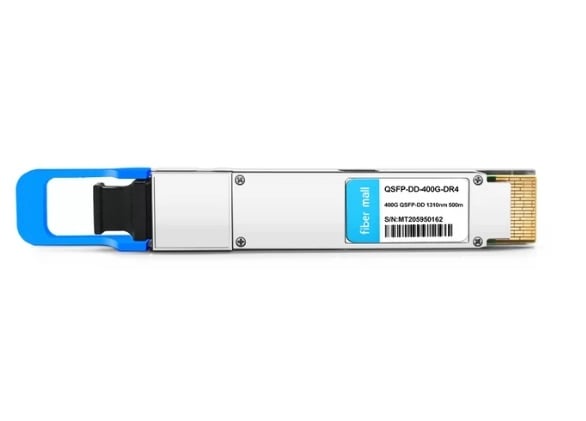
Overview of 400g Optical Transceiver
The 400g optical transceiver weighs 400g and is one of the fastest data transceivers that can send and receive data at the rate of up to 400Gbps. It contains both elements, the optical transmitter, and the optical receiver, in one small enclosure that is normally of the type QSFP-DD. The components found in a 400g optical transceiver include lasers in charge of light transmission, photodetectors to detect the incoming light, and other electrical circuits necessary for signal processing. These transceivers provide comprehensive solutions for connectivity over a number of channels, like multimode and single-mode fibers, and are applied in areas like data storage centers, supercomputing, and telecommunications in sending information over distances with insignificant loss.
Types of 400g Transceivers
Transceivers of type 400g can be analyzed according to transmission medium as well as technology characteristics, even in the fundamental form.
- Transceivers for Multimode Fiber (MMF): These are built for short distance applications and use multimode optical fibers. Mostly parallele optics technology is used in which multiple cores are utilized simultaneously to transmit multiple signals and hence can be used between data centers and also within a building.
- Transceivers for Single Mode Fiber (SMF): These transceivers are built for longer distance connections and utilize single mode fibers. They also work in certain signal wavelength domains and find application within wide area networks (WAN) as well as inter data center links due to low losses and dispersion over long-run links.
- Active Optical Cables (AOCs): These are cables bring extrinsic Optical transceiver ports via optical cable assemblies. It is very appropriate for use over short hops thereby allowing for flexibility and ease of application without compromising data rates.
- Coherent Optical Transceivers: This category makes use of complex modulation and digital signal processing in order to maximize long distance operational bandwidth mostly in high and long haul networks. The transceivers also allow control of dynamic bandwidth, thus enhancing the general network performance.
In summary, understanding the intended use of each type of 400g transceiver enables the network developer to determine the optimal design.
Benefits of Using 400g Transceivers in Data Centers
400G transceivers bring exceptional enhancement in performance and efficiency in data centers as they offer numerous advantages, which include:
- Enhanced Bandwidth Capability: Delivering data at a high speed of 400Gbps draws significant bandwidth on these transceivers, enhancing bandwidth even for these services with increasing demand for data transfer as well technological provision for bandwidth with cloud services and their large-scale use applications.
- Lowered Latency: The most recent technological features incorporated into the 400G transceivers like coherent modulation aid in cutting down the latency which is important in data transmission. Such features are essential in the sector of financial trading and video streaming where speed in processing data and response is crucial.
- Economies: Despite costing a substantial amount of money to take up these technologies in 400G, the returns in form of benefits are more. Increased efficiency leads to less additional network infrastructure and reduced operational expenses maintenance costs as well as energy use.
- Better Scalability: Data centre expansion does not entail shifting to a 400G transceiver facilitation much traffic increment as the old design of network does not have to be excessively revised. This adaptability makes it easier for the organizations to keep up with internal changes as well as developments in technology.
Thus, by using 400G transceivers in the data centers, the operational performance and reliability is greatly improved and thus prepares the organizations for the growing digital revolution.
How Do 400g QSFP-DD Transceivers Work?
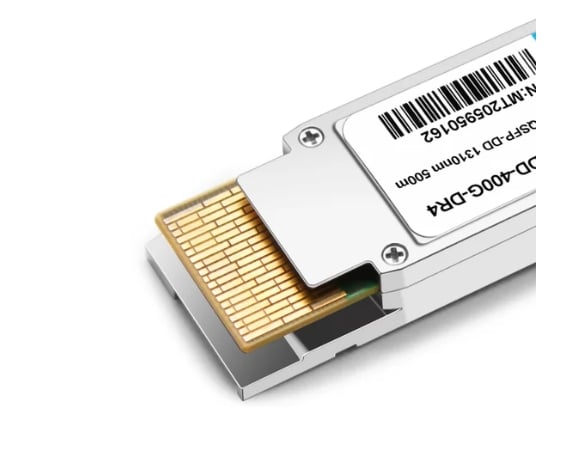
Technical Specifications of QSFP-DD Transceivers
The QSFP-DD (Quad Small Form-factor Pluggable Double Density) transceivers are engineered to deliver high-speed transfer of data and have the following features:
- Data Rate: Capable of supporting a data rate of 400 G, thus accommodating high bandwidth services.
- Form Factor: It is compact, and it can fit twice the number of standard QSFP sub-modules while still being backward compatible with the QSFP connector.
- Connector Type: Using MPO/MTP connector for multiple fiber configurations.
- Distance Range: It also comes with different reach options, which range from short,i.e., using multimode fiber, to long range, id ST single mode fiber goes as far as 10 km.
- Optical Wavelength: It mainly operates at 850 nm wavelength, which is used in multimode, while in single mode, it uses 1310 K and 1550 nm.
- Power Consumption: Most modules waste power maximally under 4.5W per module while in most datacentre.
- Protocol Support: A various number of protocol are supported, such as Ethernet, Fibre Channel, and InfiniBand, while expanding capabilities of the networks.
For these parameters, the QSFP-D transceivers have become indispensable for almost all modern high-speed networks.
400g QSFP-DD FR4 vs. 400g QSFP-DD SR8
In high-speed networking, the 400G QSFP-DD FR4 transceivers perform different functions than the 400G QSFP-DD SR8 transceivers. The FR4 transceiver is tailored for long data transmission, it has a reach of up to 2 kilometers over single mode fiber and is therefore useful for data center interconnection as well as metropolitan area networks. On the other hand, the SR8 transceiver is designed for short-distance applications and is used over multimode fiber with a maximum distance of 100 meters. An 8-fiber parallel interface is used, which increases the data throughput in high-density situations even more. However, while both devices are 400 Gbps in nature, the factors of fr4 versus sr8 indicate what kind of performance is expected from the deployment in terms of length and capacity of the link being provided by the network.
What are the Key Features of 400g Optical Modules?
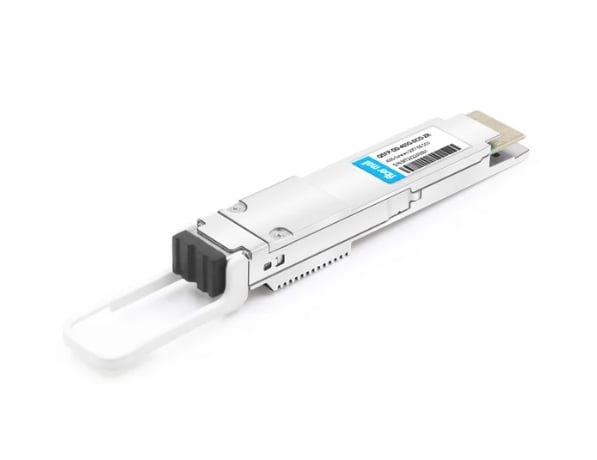
Form Factors and Compatibility
Optical modules operating at 400G, due to their wide applicability, come in different forms, such as QSFP-DD, OSFP, and CFP2. Due to a small but efficient size, the initial connectors engineering was successful in making the QSFP-DD (Quad Small Form-factor Pluggable Double Density) highly accepted due to its die density that allows it to carry many patches, in this case, up to eight lanes of 50 Gbps. Also, OSFP (Octal Small Form-factor Pluggable) has similar characteristics but is different in terms of performance and design. The reason is that these designs can be optimized for thermal management. CFP2 (C Form-factor Pluggable 2) is a better choice for long-range applications although it is bigger in comparison to others. Most vendors ensure their transceivers are compatible with each other by observing standard specifications. However, it is important to check vendor compatibility for integration into the network.
Data Rate and Bandwidth
Commonly referred to as the 400G optical trust modules, this data rate is outfitted in a way that it has high bandwidth capacity, which is a requirement for current applications. It has a data rate of 400 Gbps per lane, thus being fit into a network to transfer data more quickly and efficiently. Such bandwidth can also accommodate the simultaneous transmission of multiple streams of data, indicating how 400G modules can load such applications as cloud computing, high-performance computing, and video streaming as well. Moreover, these modules can also be operated under various lane configurations, such as 4x100G, or 8x50G, thus serving to saturate the available bandwidth with respect to the need of the network and enhancing performance of the system altogether.
Transmission Distance and Wavelength
The transmission distance and wavelength are among the major factors that affect the performance of 400G optical modules. All these modules are designed to work mostly in the range of wavelength of 850 nm for multimode fiber types and 1310 nm to 1550 nm for single-mode types of fiber. Multimode modules can usually work within a distance not greater than 100 meters (m) for the 850 nm wavelength, which is targeted for use in data centers. Single mode modules, on the other hand, can be used for much greater lengths, more than 10 kilometers (km) for the 1310 nm wavelength and more than 40 km for the 1550 nm, which is aimed for long-distance communications. Such dependencies associated with the choice of a wavelength and a mode determine the extent of attenuation and dispersion of the signal and, thus, the bandwidth usage and the quality of the data communication over the distances.
How to Choose the Right 400g Transceiver for Your Needs?
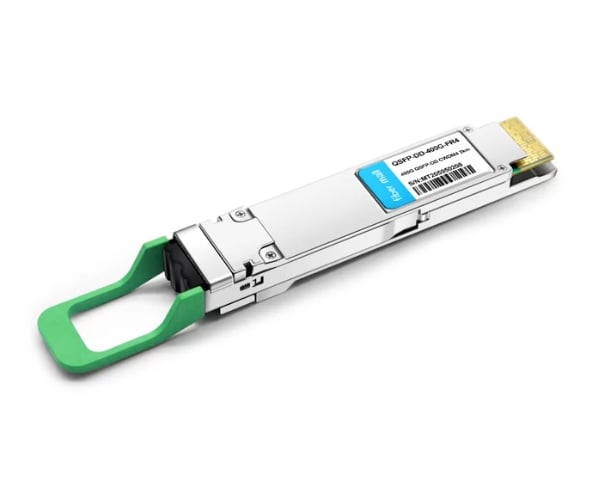
Comparing 400g QSFP-DD and OSFP Transceivers
There are many criteria to be evaluated when deciding on whether to use the 400G QSFP-DD (Quad Small Form-factor Pluggable Double Density) or the OSFP (Octal Small Form-factor Pluggable) transceivers including the form factor, density, power consumption, and compatibility.
Form Factor and Density
Using QSFP-DD transceivers in 400G connectivity is made possible since they are housed in the existing QSFP slots, which eliminates the need for infrastructure modifications. These can be placed up to 8 electrical lanes, each operating at a data rate of 50 Gbps. At the same time, OSFP transceivers onboard larger form factors that are more feature-rich, including high power plus additional cooling support. Nevertheless, OSFP also has 8 lanes each of 50 Gbps, just like QSFP-DD, but makes provisions in the design for future upgrades and features enhancement instead of modular designs.
Power Consumption
The two transceivers discussed above also have to pay kindness to their likely energy effective usage. An individual QSFP-DD module will on average draw about 3.5W while an individual OSFP module will draw 4W to 6W on account of added features such as integrated cooling. This variation is important when establishing general power allocations especially when it comes to large scale data center applications.
Interoperability and Compatibility
QSFP-DD, OSFP interconnect can be used with the different manufacturers’ switches and routers, which are able to work with high-speed interconnects for this form factor. Yet here, one can take advantage of the QSFP-DD backward compatibility and enhance the current systems step by step or install substitute modules without changing the governing components at once. In the case of OSFP, on the other hand, it is likely that the penetration of such transceivers will necessitate newer infrastructure if its full potential is to be harnessed, leading to high initial costs.
Optical Performance
In the area of optical performance, the two types of transceivers all seek to follow the maintain the most critical metrics which are maximum achievable distance and the minimum acceptable deterioration of the signal. Both transceivers accommodate the wide range of wavelengths used in both multimode and single-mode fibers even if the performance here is dependent on the manufacturer.
Conclusion
In the end, it comes down to what particular application is required to achieve with the superior single mode or multimode connection, with either of the 400G QSFP-DD and OSFP type transceivers being in place, existing systems partially addressed and possibilities for expansion in future captured. There is a need to appreciate the differences in terms of functionality offered by the two alternatives so that the levels of network performance are kept at the required expectations.
Considerations for 400g Transceiver Modules
In the overall process of selecting 400G transceiver modules for the ecosystem, several main points come into focus reaches and thermal and electrical consumption are of major importance as well; to determine the specific power budget for each of the modules QSFP-DD, OSFP it is important. In a similar vein, usage on other devices has to be a secondary concern in its fitting compatibility; cost-cutting activities in this case can be supported by an attempt to include backward compatibility features. Lastly, important operational performance measures such as reach and signal integrity should be taken into account. Last but not least, The network evolution consequences should be considered too; it is advisable to go for the modular option that can promise expansion without further huge expenditure.
Evaluating Transceiver Compatibility and Port Density
It is also prudent to take into consideration the geometry and dimension of networking devices while sizing up the ports and transceivers used in the networking. This was the case mainly as regards the transceiver type like QSFP-DD or OSFP, which determines how many such headers a switch/router will have from the slot layout or port configuration. Ports high in numbers come in handy, especially in environments that require numerous transceivers, requiring some to provide multiple transmission lanes and thus increasing data bandwidth without occupying too much space. At the same time, other parameters that are necessary for designing the transceivers and the corresponding ancillary networking devices should also be checked, these being data rates and accepted protocols. In addition, researching the vendor’s compatibility lists and available interoperability testing results and looking upon these results often will provide the necessary suggestions to assist the final users in choosing the most optimal network hardware and topologies, improving performance and thus reducing the risk of congestion in the network.
What is the Role of 400g Transceivers in 400 Gigabit Ethernet?
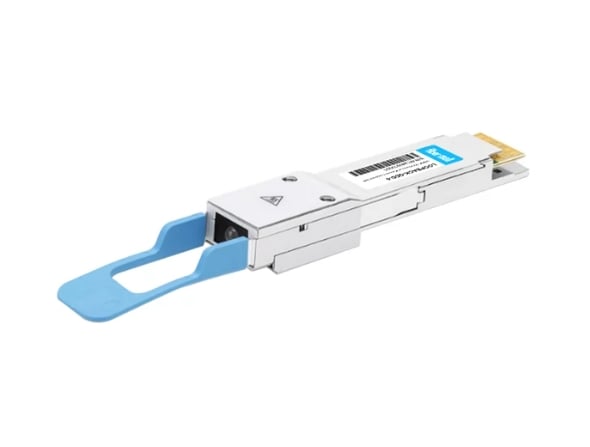
Implementing 400G Ethernet with QSFP-DD Optical Transceivers
Some standards compliance is necessary to ensure connectivity and data integrity during the use of QSFP-DD optical transceivers to set up 400G Ethernet through optical-wavelength methods. Working in conjunction with the QSFP-DD camera are groups of transceivers that implement not only the 400G but also form factors in single and multimode fiber systems. Important aspects comprise the use of the right optical cables to cover the specified distances while maintaining the signal strength and checking whether the switches and routers of the network also incorporate the 400G points. From a more infrastructural perspective, thermal management and energy efficiency need to be observed to ensure sustainable intervention and potency in highly-dense data environments.
Advantages of High-Performance Networks
The large-scale implementation of 400G Ethernet with the support of QSFP-DD optical transceivers has a number of benefits to high-speed networks. To begin with, it brings about the needed capacity constraints, and that is, it increases performance and speed of data transfer, which meets the increasing needs of modern systems, including those in the cloud and big data systems. Further, integration of next-generation trans receivers such as those of QSFP-DD also enhances the quality of the transmitted signals and reduces the amount of time needed to relay them. Also, since the form factor of QSFP-DD transceivers is small, the port density is efficient, and hence, space in the data center racks is maximized. Finally, the amount of energy required to facilitate the movement of data is also less, and this lowers the overall running costs and reduces the carbon credits, creating a more convincing case for the transition to a 400G infrastructure.
Where to Find Data Sheets and Detailed Information on 400g Transceivers?
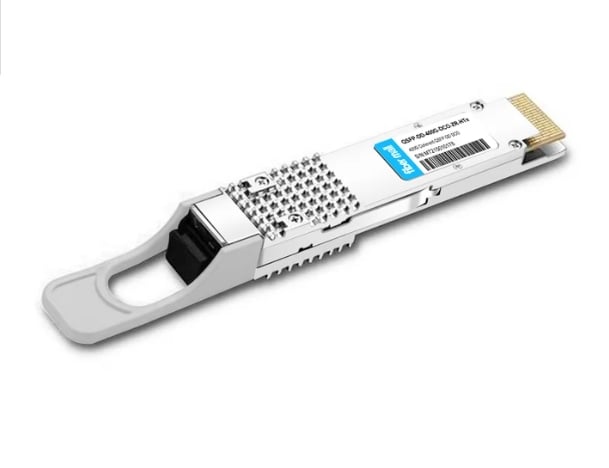
Accessing Manufacturer Data Sheets
For comprehensive specifications and performance data of various 400G transceivers, the online portals of major roadmap producers such as Cisco Networks, Juniper Networks, and Mellanox Technologies should be reviewed. In most of the sites, there is a product documentation section where there are data sheets that highlight the compatibility and operational and installation requirements. Besides, other services, such as those provided by the IEEE or the OIF if you are looking for more information regarding 400G standards, provide technical standards and white papers. It is also important to note that the most recent revisions of the data sheets are being used as these are the best available currently, and regulatory firms expect this.
Using Data Sheets for Specification Comparisons
Comparison of different 400G transceivers is performed primarily using data sheets through evaluation of important parameters. Additional aspects such as bandwidth, total power consumption, maximum transmission distance and main modulation format(s) utilized need to be considered as well. This data assists in making a proper choice considering the applications that are intended. Moreover, the assessment of thermal management and size of the transceiver also helps in determining the compatibility with the current system. This systematic approach enables networking experts to choose the best option and to incorporate 400G transceivers into their systems with maximum efficiency.
Reference Sources
Frequently Asked Questions (FAQs)
Q: What is the concept of a 400g QSFP-DD transceiver, and in which way does it prove to be different from transceiver modules?
A: A 400g QSFP-DD (Quad Small Form Factor Pluggable-Double Density) transceiver is an optical transceiver module that was created to assist in 400 Gigabit Ethernet usage. It differs from other transceiver modules in that it is two times more denser than the standard QSFP module, since it possesses an eight-lane electrical interface which each lane modulates at 50G PAM4 and hence greater data rates are attainable.
Q: What are the pros of incorporating 400g modules for optical communication in network infrastructure?
A: The exploitation of 400g optical modules in cable networks provides a number of benefits “such are successively”, increased bandwidth, increased data transfer rates and scale-up for the networks in the future. These modules possess such modern modulation methods as PAM4 that support distances of about 10km which is required for upper level data centers and long-haul communication.
Q: What is the classification of the 400g transceiver such as 400g QSFP-DD DR4?
A: The 400g QSFP-DD DR4 is a non-roaming short-reach optical transceiver that is intended for a maximum distance of up to 100m operating on single-mode fibers. It does this by taking 4 passive lanes, each rated at 100G PAM4, and multiplexing them together, thus giving a 400G cumulative capacity. The DR4, on the other hand, is more focused on high-density and short-range because compared to the other 400g transceiver types like the 400g QSFP-DD LR8, supporting up to 10 km.
Q: What is the significance of PAM4 modulation when it comes to the 400g optics?
A: PAM4 (Pulse Amplitude Modulation with 4 levels) is important in 400g optics because it provides the upper hand of 2 bits per symbol, making the data rate efficient since the same frequency can carry 2 forms of data. At a glance, this solves the issue of video systems’ higher data rates being achieved without multiplying the width of the bandwidth, hence making it possible to build 400g and even future 800g networks over the existing fiber systems.
Q: What is the difference between 400g OSFP and 400g Qsfp-Dd?
A: The 400g OSFP (Octal Small Form Factor Pluggable) and 400g QSFP-DD are two different types of 400g interface module forms. Though both are associated with high transfer speeds, 400g OSFP is a little bulkier and has a greater thermal management capacity, hence intended for high power applications. 400g QSFP-DD on the other hand is low bulk and more compact in shape with increased density and has high compatibility with older types of QSFP cabinets.
Q: In what way can 400g transceivers and cables increase the efficiency of data centers?
A: 400g transceivers and cables have proven to enhance data center efficiency mainly due to increased data rates as well as improved use of the available fiber optic cables. Data centers can pump 400g optic and get less capacity on the existing fibre optic structures, experiencing a decrease in latency and bandwidth enabling more services and more demanding applications with fewer connections and components.
Q: How cost-effective is upgrading the optical module to 400g?
A: There are a number of cost factors involved when it comes to the optical module upgrade to 400g solutions, such as the cost of the newer transceiver modules that are to be invested in, the existing network connectivity, and the possibility of other required components. To this extent, however, the expenditure can arguably be supported by the long timelines of the advantages such as bandwidth increase, longevity, and better network quality.
Q: What is the main purpose of transgender 400g QSFP-DD LR4?
A: Transgender modular 400G QSFP-DD LR4 is meant for long distance transmission of data without any obstacles up to 10km but with single mode polishes. Such transponders are typical for places where data are required to be transferred at higher frequencies and at high reliability in large distances, including peer-to-peer, and metropolitan area networks.
Q: What impact of 400g optical modules on future network scalability?
A: Future network scalability is enhanced by 400g optical modules in that they promise high transmission performance at these data rates and even at the use of PAM4 modulation and other modulation methods. They make it possible to scale up to higher speeds like 800g with a potential customer base preparedness and therefore increase customer satisfaction to boost the business model.
Q: What are some common types of 400g transceivers Primary form factors?
A: Prominent in the list of 400g transceivers primary form factors are the 400g QSFP-DD, 400g OSFP, bill of materials and, 400g CDFP. Each form factor gives its specific value proposition- these lies in packing densities, interfaces, thermal fitting, and simplicity of fitting when installing the accessory to the infrastructure. This will depend on what is required/policy owned by the deploying agency.
Related Products:
-
 QSFP-DD-400G-SR8 400G QSFP-DD SR8 PAM4 850nm 100m MTP/MPO OM3 FEC Optical Transceiver Module
$149.00
QSFP-DD-400G-SR8 400G QSFP-DD SR8 PAM4 850nm 100m MTP/MPO OM3 FEC Optical Transceiver Module
$149.00
-
 QSFP-DD-400G-DR4 400G QSFP-DD DR4 PAM4 1310nm 500m MTP/MPO SMF FEC Optical Transceiver Module
$400.00
QSFP-DD-400G-DR4 400G QSFP-DD DR4 PAM4 1310nm 500m MTP/MPO SMF FEC Optical Transceiver Module
$400.00
-
 QSFP-DD-400G-SR4 QSFP-DD 400G SR4 PAM4 850nm 100m MTP/MPO-12 OM4 FEC Optical Transceiver Module
$450.00
QSFP-DD-400G-SR4 QSFP-DD 400G SR4 PAM4 850nm 100m MTP/MPO-12 OM4 FEC Optical Transceiver Module
$450.00
-
 QSFP-DD-400G-FR4 400G QSFP-DD FR4 PAM4 CWDM4 2km LC SMF FEC Optical Transceiver Module
$500.00
QSFP-DD-400G-FR4 400G QSFP-DD FR4 PAM4 CWDM4 2km LC SMF FEC Optical Transceiver Module
$500.00
-
 QSFP-DD-400G-SR4.2 400Gb/s QSFP-DD SR4 BiDi PAM4 850nm/910nm 100m/150m OM4/OM5 MMF MPO-12 FEC Optical Transceiver Module
$900.00
QSFP-DD-400G-SR4.2 400Gb/s QSFP-DD SR4 BiDi PAM4 850nm/910nm 100m/150m OM4/OM5 MMF MPO-12 FEC Optical Transceiver Module
$900.00
-
 QSFP-DD-400G-ER4 400G QSFP-DD ER4 PAM4 LWDM4 40km LC SMF without FEC Optical Transceiver Module
$3500.00
QSFP-DD-400G-ER4 400G QSFP-DD ER4 PAM4 LWDM4 40km LC SMF without FEC Optical Transceiver Module
$3500.00
-
 OSFP-400G-DR4-FLT 400G OSFP DR4 Flat Top PAM4 1310nm MTP/MPO-12 500m SMF FEC Optical Transceiver Module
$700.00
OSFP-400G-DR4-FLT 400G OSFP DR4 Flat Top PAM4 1310nm MTP/MPO-12 500m SMF FEC Optical Transceiver Module
$700.00
-
 OSFP-400G-SR4-FLT 400G OSFP SR4 Flat Top PAM4 850nm 30m on OM3/50m on OM4 MTP/MPO-12 Multimode FEC Optical Transceiver Module
$550.00
OSFP-400G-SR4-FLT 400G OSFP SR4 Flat Top PAM4 850nm 30m on OM3/50m on OM4 MTP/MPO-12 Multimode FEC Optical Transceiver Module
$550.00
-
 OSFP-400G-LR4 400G LR4 OSFP PAM4 CWDM4 LC 10km SMF Optical Transceiver Module
$1199.00
OSFP-400G-LR4 400G LR4 OSFP PAM4 CWDM4 LC 10km SMF Optical Transceiver Module
$1199.00
-
 OSFP-400G-DR4+ 400G OSFP DR4+ 1310nm MPO-12 2km SMF Optical Transceiver Module
$850.00
OSFP-400G-DR4+ 400G OSFP DR4+ 1310nm MPO-12 2km SMF Optical Transceiver Module
$850.00
-
 OSFP-400G-SR8 400G SR8 OSFP PAM4 850nm MTP/MPO-16 100m OM3 MMF FEC Optical Transceiver Module
$225.00
OSFP-400G-SR8 400G SR8 OSFP PAM4 850nm MTP/MPO-16 100m OM3 MMF FEC Optical Transceiver Module
$225.00
-
 OSFP-400G-DR4 400G OSFP DR4 PAM4 1310nm MTP/MPO-12 500m SMF FEC Optical Transceiver Module
$800.00
OSFP-400G-DR4 400G OSFP DR4 PAM4 1310nm MTP/MPO-12 500m SMF FEC Optical Transceiver Module
$800.00

